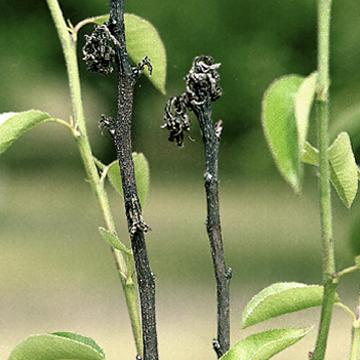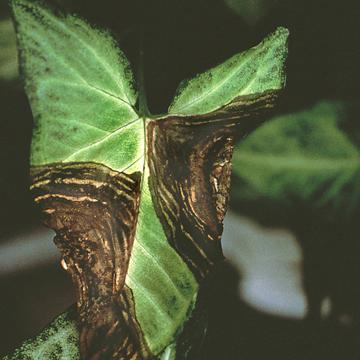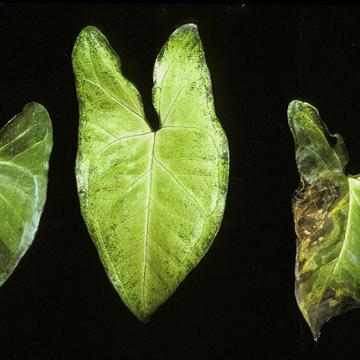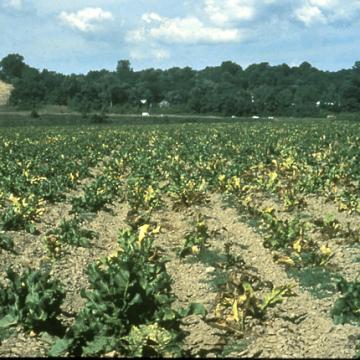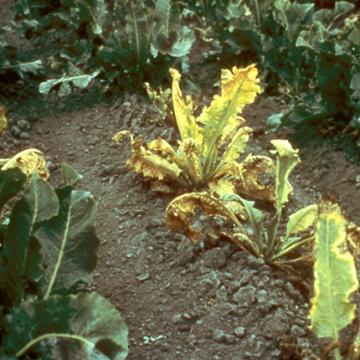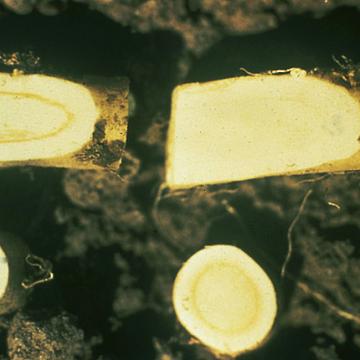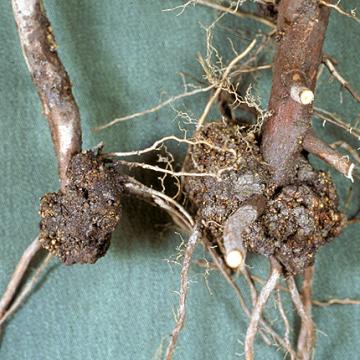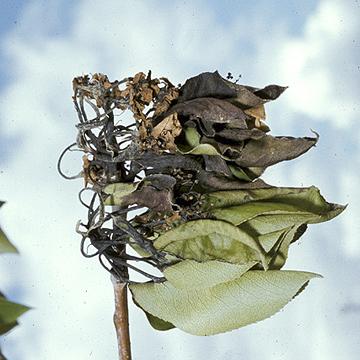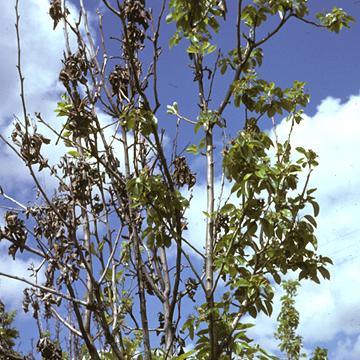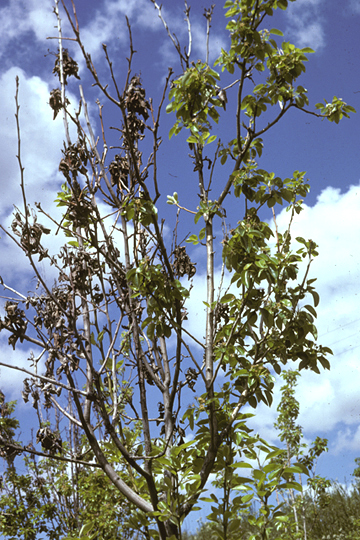DISEASE: Bacterial blast
HOST: Pear
The bacterium infects all flower parts and may spread and kill the entire spur.
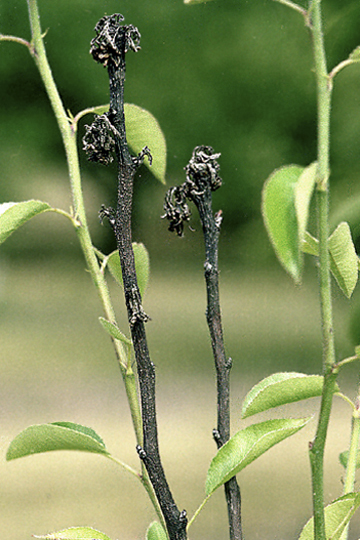
Bacterial blast | Pear
DISEASE: Bacterial blast
HOST: Pear (Pyrus communis)
PATHOGEN: Pseudomonas syringae pv. syringae
SOURCE: W. Sinclair
DISEASE: Bacterial leaf spot
HOST: Nephthytis
Leaf with concentric rings of dark tissues. There has been confusion of the causal agent with Dickeya sp., which also causes mushy leaf spots.

Bacterial leaf spot | Nephthytis
DISEASE: Bacterial leaf spot
HOST: Nephthytis (Syngonium podophyllum)
PATHOGEN: Pectobacterium carotovorum
PATHOGEN SYNONYM: Erwinia carotovora subsp. carotovora
SOURCE: A. Chase
DISEASE: Bacterial leaf spot
HOST: Nephthytis
Water-soaked tissues and large, dark brown necrotic areas at leaf margins. Healthy (center leaf).
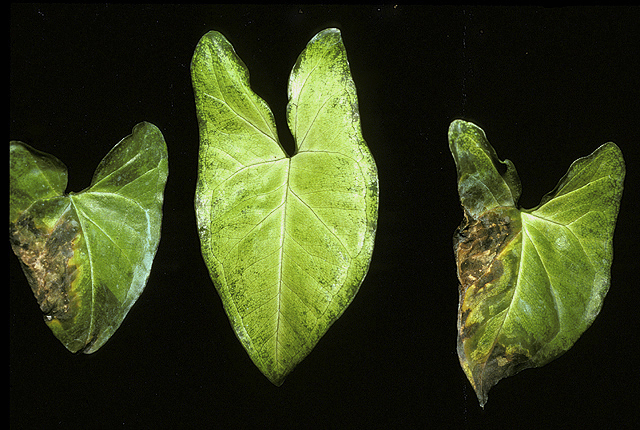
Bacterial leaf spot | Nephthytis
DISEASE: Bacterial leaf spot
HOST: Nephthytis (Syngonium podophyllum)
PATHOGEN: Pseudomonas cichorii
SOURCE: S. Thomson
DISEASE: Brittle root
HOST: Horseradish
Dying, stunted, yellow to brown horseradish plants.
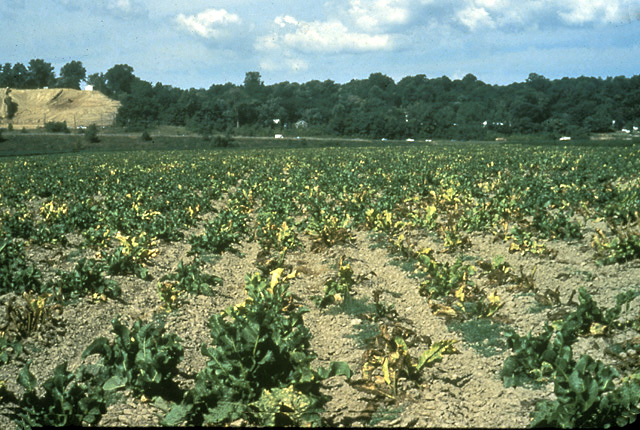
Brittle root | Horseradish
DISEASE: Brittle root
HOST: Horseradish (Armoracia rusticana)
PATHOGEN: Spiroplasma citri
SOURCE: C. Eastman, M. Davis
DISEASE: Brittle root
HOST: Horseradish
Close-up of stunted, yellow horseradish plants.
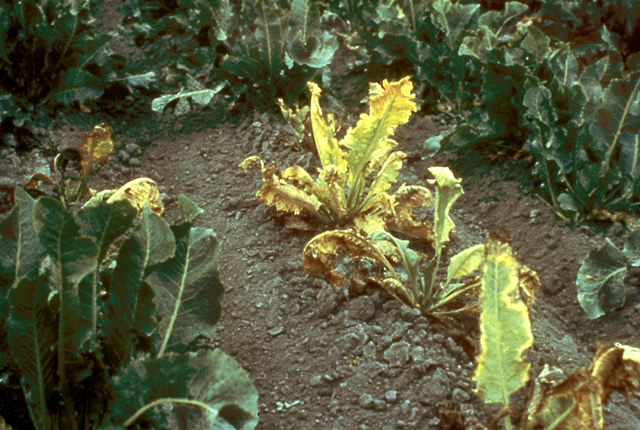
Brittle root | Horseradish
DISEASE: Brittle root
HOST: Horseradish (Armoracia rusticana)
PATHOGEN: Spiroplasma citri
SOURCE: D. Sherrod
DISEASE: Brittle root
HOST: Horseradish
Horseradish with discolored internal tissues. Healthy root segment (top right).
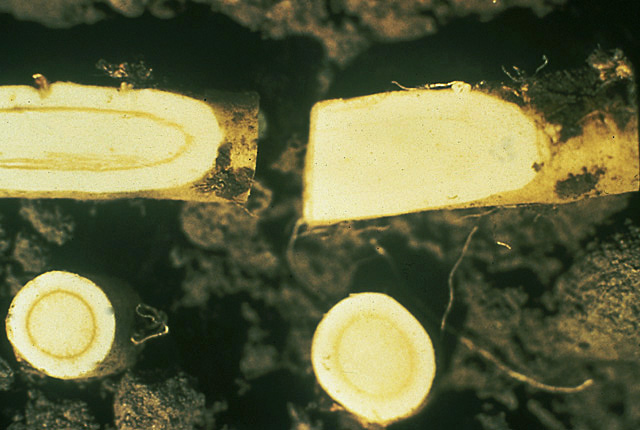
Brittle root | Horseradish
DISEASE: Brittle root
HOST: Horseradish (Armoracia rusticana)
PATHOGEN: Spiroplasma citri
SOURCE: J. Fletcher, M. Davis
DISEASE: Crown gall
HOST: Pear
Crown gall of pear rootstock.
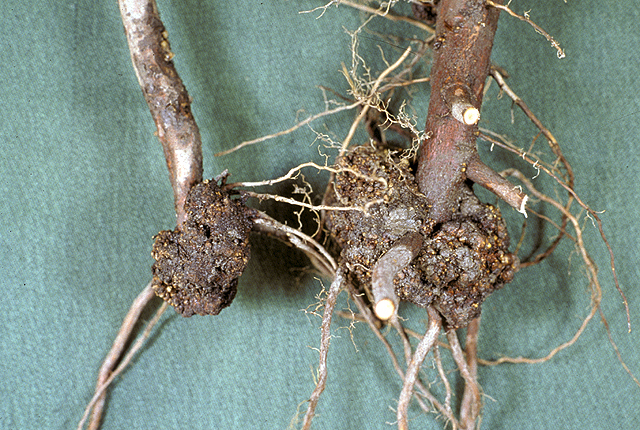
Crown gall | Pear
DISEASE: Crown gall
HOST: Pear (Pyrus communis)
PATHOGEN: Agrobacterium tumefaciens
PATHOGEN SYNONYM: Rhizobium sp.
SOURCE: H. Sawada, M. Goto
DISEASE: Fire blight
HOST: Pear
Blighted shoot and blossoms.
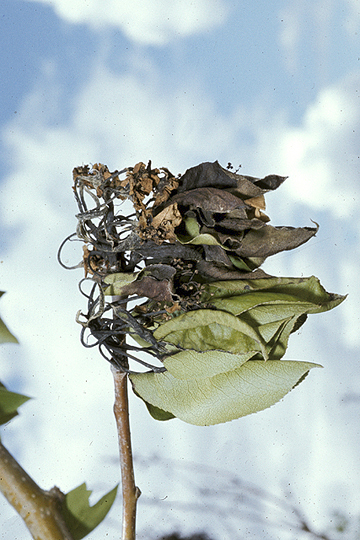
Fire blight | Pear
DISEASE: Fire blight
HOST: Pear (Pyrus communis)
PATHOGEN: Erwinia amylovora
SOURCE: M. Schroth


